Produce Spotlight: The Ultimate Guide to Sweet Potatoes
Whether used in a side dish, baked into a dessert, or served as the main attraction, sweet potatoes are incredibly versatile and a great addition to any meal! You may be wondering how to grow them How long should they cook for? How do I prevent them from browning? In this month’s produce spotlight, we will discuss all these delicious details, recipes and more!
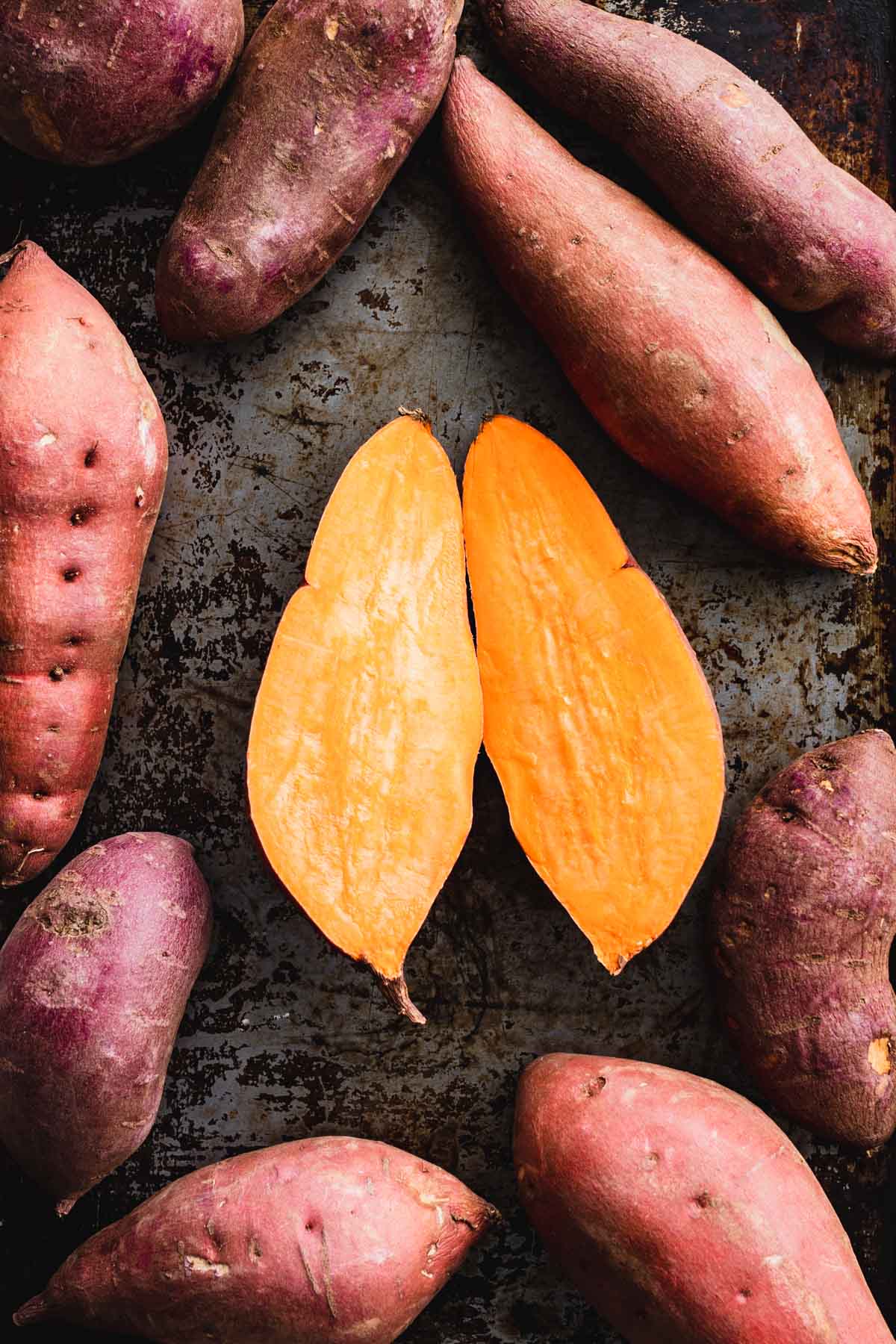
Sweet Potato Recipes
Sweet Potato Recipes
There are many reasons why I'm so fond of sweet potatoes. They're great to eat on their own, to make soup out of, add to salads, and more. Read on to see some delicious and easy recipes!
Sweet Potato Breakfast Hash
Friends, Romans, countrymen, lend me your ears. This breakfast hash is so fantastically easy to make, and delicious, you’ll be waxing poetic after one bite! It’s paleo, and great for a grain-free breakfast to meal prep and reheat to serve on its own or with eggs.
Slow Cooker Vegetarian Chili
How many chili recipes is too many? The answer is: that’s a trick question, because you can never have enough! This one today is a special treat because it is a Slow Cooker Vegetarian Chili with Sweet Potatoes. It also has two different kinds of beans and corn added in! You can top it off with your favorite toppings to customize your bowl.
Healthy Sweet Potato Casserole
This healthy sweet potato casserole with maple pecans and italian meringue is a makeover of the classic Thanksgiving side dish. Atop the orange-infused sweet potato mash is a gooey layer of maple pecans and then it’s covered in a ultra light and airy swath of whipped meringue (instead of marshmallows).
Stuffed Sweet Potatoes
These stuffed sweet potatoes are fast and delicious. The fresh basil, melty gooey cheese and steaming hot chicken and marinara filling is comforting and cozy and at the same time innovative and gourmet tasting!
Five Spice Healthy Mashed Sweet Potatoes
I dare you to not fall in love with these (vegan and paleo) mashed sweet potatoes. Actually, I do not think it is possible to have even the tiniest taste without declaring it to be the most amazingly delicious thing you have ever tasted.
Sweet Potato and Peanut Soup
Friends, I’m here to tell you today this soup is one of the best Healthy Seasonal Recipes ever. There are times in recipe development when the stars align and a keeper is born. This soup is one of those recipes. It is so delicious that I can’t wait for you to try it. I am officially obsessed!
Roasted Sweet Potatoes with Lemon
These roasted sweet potatoes are tossed with a bright and fresh citrus dressing as well as cilantro, shallot, and chive. This is a simple yet flavorful vegan and paleo side dish!
Easy Sweet Potato Casserole
Comin’ atcha, with a brand new easy sweet potato casserole recipe that is totally comforting and classic tasting, but so easy to make entirely from scratch. Don’t worry it doesn’t have any marshmallows, just delicious candied pecans, brown sugar, cinnamon and butter on top to make these ultra-creamy sweets irresistible!
Cheddar Chipotle Sweet Potato Soup
This soup recipe is silky smooth and has tons of flavor from smoky chipotle chili pepper and cheddar cheese! I added in a bit of cider vinegar, for contrast and brightness. It helps balance the sweetness from the onion and sweet potatoes.
Sweet Potato Coconut Curry
Sweet potatoes here are simmered in coconut milk and vegetable broth with curry and spices. The dish is finished with cilantro, mint and lime and a scattering of roasted cashews for crunch. It is naturally vegan, paleo, whole30 and gluten-free.
Paleo Ginger Cilantro Sweet Potato Salad
This salad may just rock your backyard barbecue’s world. It’s also vegan friendly and naturally gluten-free.
Brown Rice and Sweet Potato Salad
This recipe is a super yummy Fall side dish that is simple enough for a weeknight meal AND special enough for your Holiday table. Impossible you say! Oh, it’s possible…. read on! It was inspired by my recent trip to Chicago where I got to live out my dreams of competing on a cooking show.
Sweet Potato Noodles with Shrimp and Cilantro Pesto
This recipe for gluten-free sweet potato noodles topped with shrimp, cilantro pesto and peas is a clean eating weeknight meal ready in under 45 minutes!
Sweet Potato and Black Bean Chili Tortilla Bowls
These sweet potato and black bean chili tortilla bowls give you all the nutrition and yumminess from the veggie packed high fiber filling without needing a huge tortilla to wrap it all up. It is comfort food at its best!
Sweet Potato Blondies
Are you looking for a sweet treat you can feel good about serving your peeps? Then check out these Sweet Potato Blondies. Not only are they chock full of yummy chocolate and toasted walnuts, but they are also veggie-packed, whole-wheat, sweetened with unrefined maple sugar and have 100 less calories than the traditional version.
Maple Sweet Potato Coffee Cake
Naturally sweetened with maple syrup, this sweet potato coffee cake is the ultimate fall and winter treat. Enjoy for breakfast or as a healthier dessert.
Gluten-Free Sweet Potato Praline Bundtlettes
I love this recipe for gluten-free sweet potato praline mini bundt cakes and I am so happy you’ll get to try them too! They're the perfect afternoon treat or dessert.
Oven Baked Sweet Potato Fries
Oven baked sweet potato fries is the health AND life hack to eating fries whenever you want. Pair them with a spicy aioli or any of your other favorite condiments!
Sweet Potato Brownies
Sweets are a vegetables best friend, you know why? Because you can easily hide them in there without your kiddos knowing. They're absolutely delicious (and psst, they're also vegan).
Cinnamon Sweet Potato Smoothie
I've bet you've never tried putting sweet potato in your smoothies before. But trust me, they really add something special. It's the perfect fall smoothie, and it tastes just like a pie or a sweet potato casserole.
Origin and Growing Information
Origin
The earliest record of cultivation was over 5,000 years ago in Peru, and other parts of South and Central America. Their popularity began to spread in the 16th century following the discovery by European travelers.
Sweet Potatoes belong to the morning glory family, Convolvulacea. It is a common belief that sweet potatoes are just a type of potato, however, the two are classified slightly differently.
Although both are enlarged storage organs that grow underground, sweet potatoes are modified lateral roots, or root tubers, while a traditional potato is a stem tuber. Root tubers are swollen secondary roots. Stem tubers grow from swollen stems, either rhizomes or stolons.
Varieties
Each variety possesses different characteristics including skin and flesh color, size, texture, and firmness. Here is a list of the more popular types and their identifiable qualities:
- Beauregard – red to copper skin and bright orange flesh
- Jewel – copper to brown skin and orange flesh
- Garnet – red to purple skin and orange flesh
- Hannah – tan skin and white flesh that turns yellow when cooked
- Okinawa – brown skin and purple flesh
- Charleston – dark purple skin and purple flesh
- Murasaki (Japanese Sweet Potato) – purple skin and white to yellow flesh
Growing Climate
Sweet potatoes do well in warmer climates where the growing season is predictable, however, with the right preparation, they can be grown in northern regions as well.
If you live in a colder state, such as Vermont, consider covering the beds with fabric mulch or plastic prior to planting to heat up the soil. Check out The Old Farmer’s Almanac for more tips on growing.
Growing Tips
This particular root vegetable grows from slips. Slips can be purchased at garden or seed stores, but it’s also super simple to grow your own!
To do so, you’ll cut a sweet potato lengthwise, and place the halves into warm moist soil. The potato will start to sprout small roots which can be cut and placed into a separate pot until ready to be planted (about 6 weeks).
You can learn more about buying or growing slips on Urban Farmer.
Growing Conditions
The plants thrive in full sun and soil with good drainage, such as a raised bed. This placement keeps the soil warm and prevents rot. Roots need ample room to grow and splits should be placed 12-18 inches apart.
It’s best to plant the slips when the soil reaches 65°F and when the threat of a late frost has passed. The crops should be watered weekly, and more heavily during the dry weeks.
Harvesting Tips
The roots reach full maturity in 85 to 120 days. It’s best practice to check in around the 85th day since root vegetables continue to grow and the skin can split if they become too large. Yellowing vines signals that they are ready to be harvested. The harvest should always happen before the first frost.
The roots will be 4-6 inches below the soil. Try using a tool to dig them up and shake off any excess dirt. In order to maximize the flavor, you’ll need to cure them by allowing them to air dry for about 10 days at 75-80° F.
Plant Hardiness
Sweet potatoes are only hardy in USDA plant hardiness zones 8-11. If you live in a moderate to cold region, the vines won’t survive the winter. This map will help you determine which zone you live in.
Yams vs. Sweet Potato
While many use the terms interchangeably, yams and sweet potatoes are entirely different crops. When first cultivated, growers and consumers needed to differentiate between the soft and firm varieties and since the softer varieties resembled a traditional yam, it became common to describe them as such. Yams are tubers, not true root vegetables.
In the US, fresh yams can be difficult to find in a normal grocery store, while sweet potato varieties are sold and consumed year-round.
There are different qualities that make the two distinguishable. A traditional yam has rough, scaly skin that is similar to bark and difficult to peel. The flesh of a yam varies from white to purple and the internal texture is starchier and drier than that of a sweet potato. They also do not offer the same nutrients as sweet potatoes.
Read more about yams vs sweet potatoes at the Library of Congress.
Nutrition Information
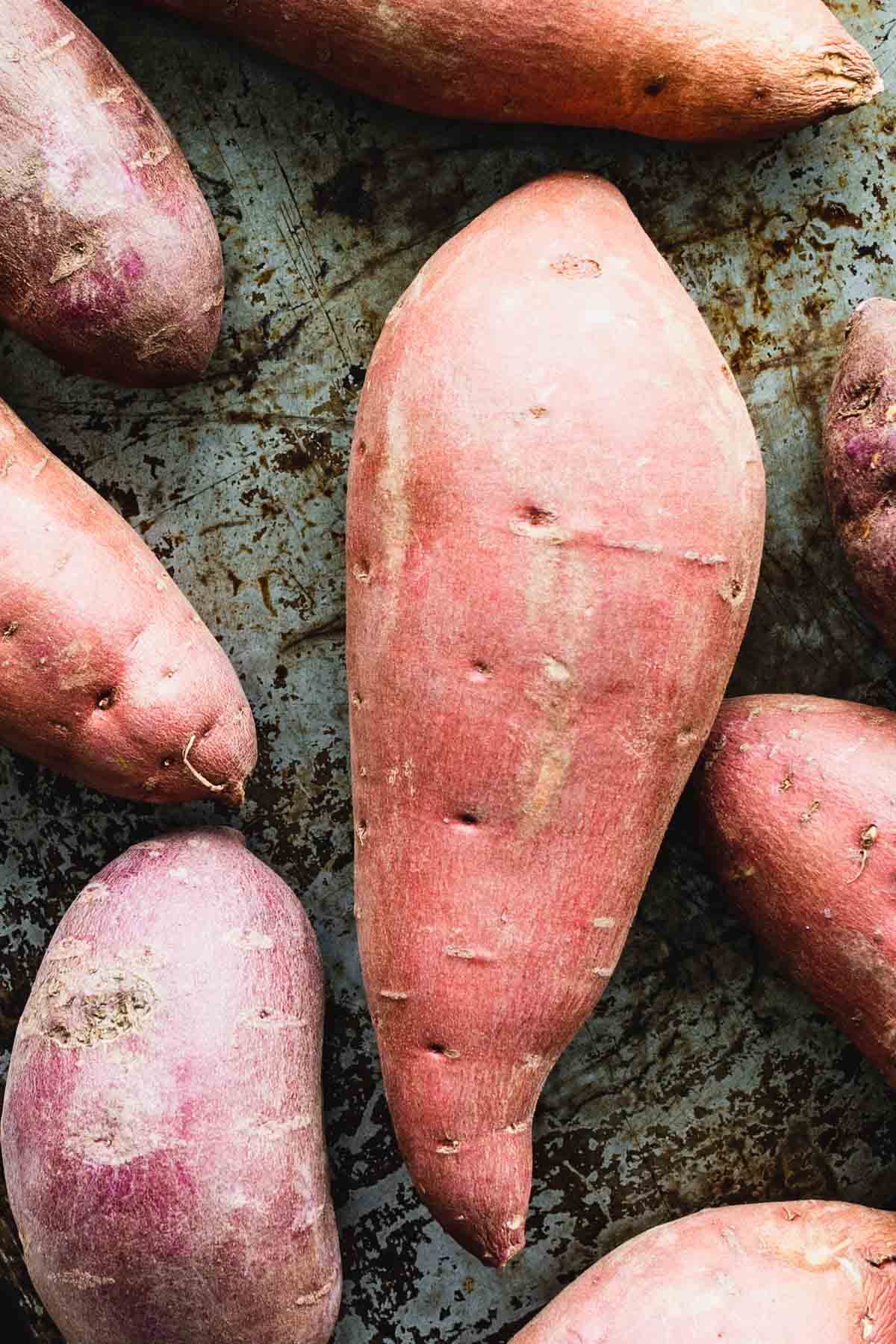
Nutrition Highlights
All varieties are rich in micronutrients. They contain vitamin C, B6, and the minerals potassium and magnesium which both can reduce the risk of heart disease. More information can be found in The Journal of Clinical Hypertension.
Orange varieties contain beta-carotene; a provitamin that converts to vitamin A in the body. The National Institutes of Health states that vitamin A plays a role in normal vision, immune function, and reproductive health.
Purple varieties contain Anthocyanins. This type of phytochemical is known to work as an anti-inflammatory and anti-cancer agent by providing antioxidants and protecting the body from free radicals.
Calories
A medium sweet potato (5″ in length) is about 112 calories. According to the USDA, it contains 26 grams of carbohydrates, primarily starch (about 60% of the carbohydrate makeup), sugar, and fiber. Fat and protein content are relatively low and provide only 2g and .1g, respectively.
Sweet Potato as Baby Food
The high nutrient content and soft texture make them a great option for young ones. Once your child begins complementary feeding, it’s safe to introduce sweet potatoes that have been cleaned, peeled, and mashed or pureed to a smooth consistency.
This article discusses starches during complementary feeding in more detail.
Sweet Potatoes and Muscle Building
There isn’t a ton of scientific research that links bodybuilding and sweet potato intake, however, the carbohydrates present can be a good source of energy when sustaining long workouts.
Sweet Potato FAQs
Sweet potatoes are safe to eat raw. Most people choose to cook them to improve the texture and cooking may increase the bioavailability of certain nutrients. Read more on their nutrition at Harvard’s School of Public Health.
The skin is full of fiber, which can support healthy digestion and aid in weight management by increasing the body’s satiation hormones. Just be sure to clean them well.
They are fine to consume if you eat a low FODMAP diet. Sweet potatoes are the only potato that is considered in a strict Paleo eating pattern, however, large quantities may cause an unwanted spike in blood sugar. Due to their high carbohydrate content, they are excluded from a Ketogenic diet.
Cooking Information
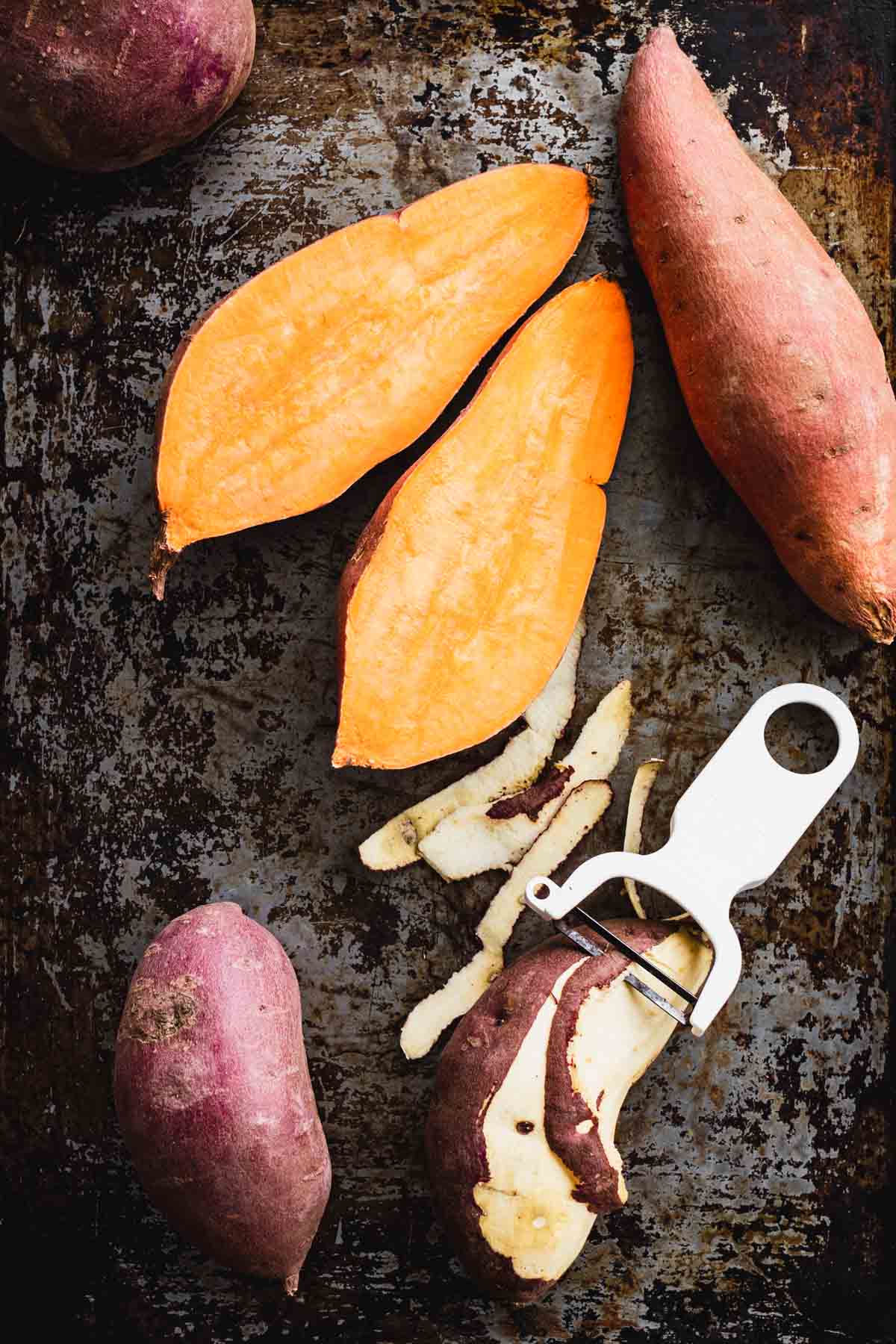
Prevent Browning
Once the flesh is exposed to the air, it begins a process called oxidation. To prevent this, begin cooking immediately after peeling or store them in cold water until you are ready to use them.
Preperation
The cooking time varies depending on your method.
- Roasting: For roasted sweet potatoes: cut into ¾ inch chunks, toss with oil, salt and pepper and cook at 375°F for 35-40 minutes, or until potatoes are tender and browning.
- Baking: Bake at 425°F for 50 minutes to an hour, or until fork tender. Because they weap while baking, it is best to put them on a foil lined baking sheet. It is not necessary to poke them with a fork.
- Microwave: Pierce 4 sweet potatoes all over with a fork. Microwave 8 minutes. Check for doneness by inserting a fork into the potatoes. Turn over (use oven mitts) and continue microwaving 8 to 10 more minutes. A fork should be able to slide into the flesh easily.
- Steaming: Peel and cut them into 2-inch sized cubes, bring 2 inches of water to a boil with a steamer basket on top, add cubes, cover, and cook for about 20 minutes.
- Boiling: Clean them and cut them into evenly sized chunks. Bring salted cold water to a boil and add the potatoes. Leave on medium-high heat for 20-30 mins or until pieces are tender.
Sweet Potato Casserole
The sweet taste, creamy texture and orange color is what makes a classic sweet potato casserole distinct. The Garnet, Jewel, or Beauregard have a higher sugar content and a soft consistency so it’s best to look for those when preparing a casserole dish.
Freezing
Cooking (boiling, steaming, roasting) prior to freezing them will help them keep their taste and texture. Be sure to let them cool off completely, and keep them in an airtight container before placing them in the freezer.
Shelf Life
Root vegetables tend to have a longer shelf life than their more perishable counterparts. Sweet potatoes should stay dry and cool but avoid storing them in the fridge. When kept at 55-60°F, they can last up to 6 months.
Storage
Sweet potatoes are safe to eat as long as they are firm to the touch. If your potatoes start to sprout, simply remove the sprouts before consumption.
Thanks for reading. If you haven’t already make sure to sign up for my email list so you’ll never miss another post!

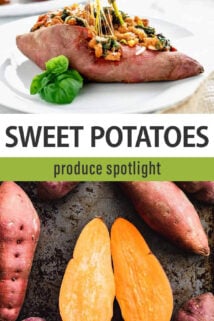
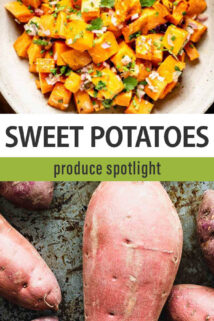
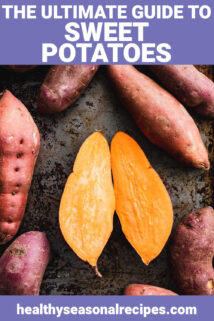
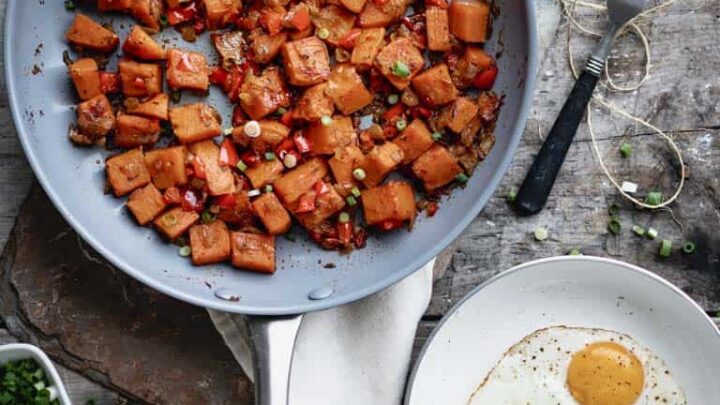


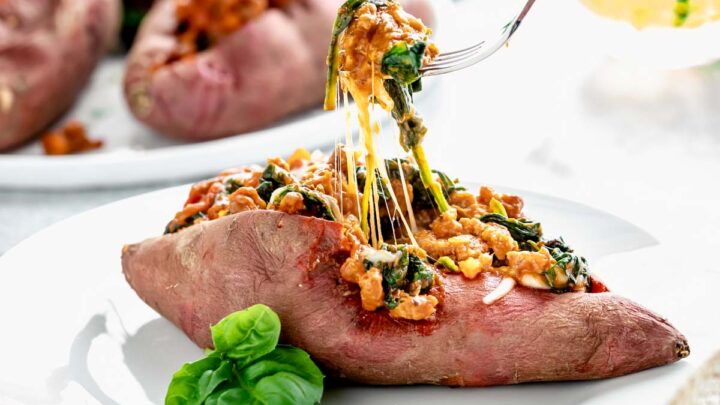
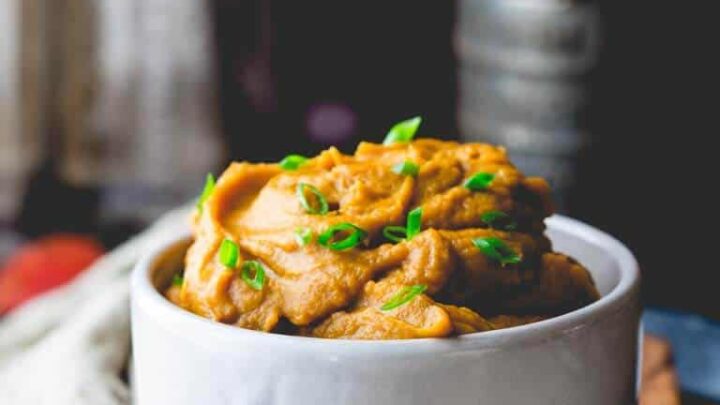

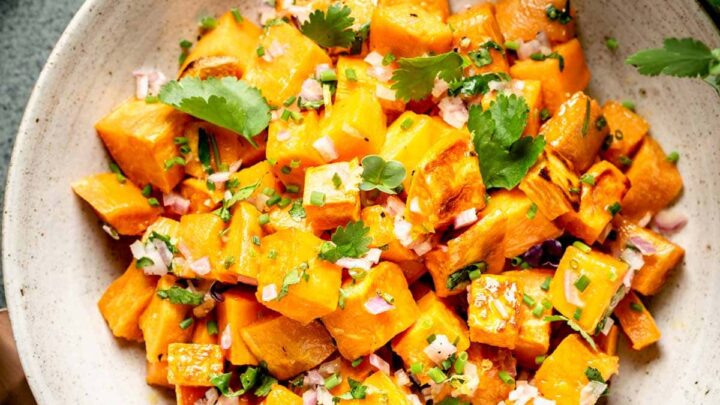
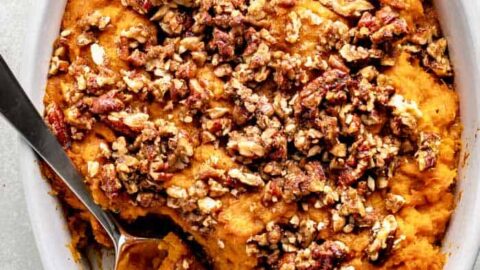
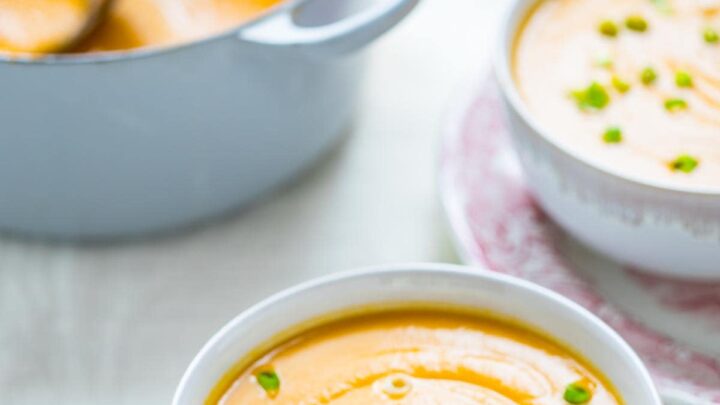
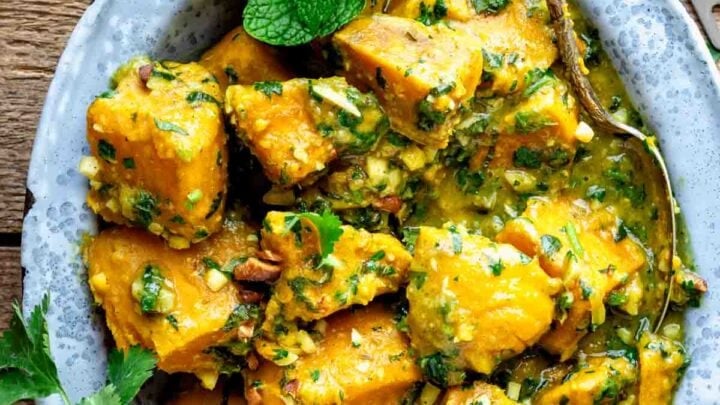
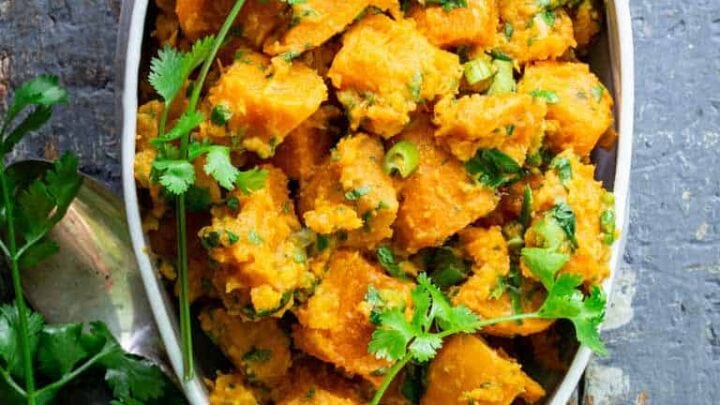

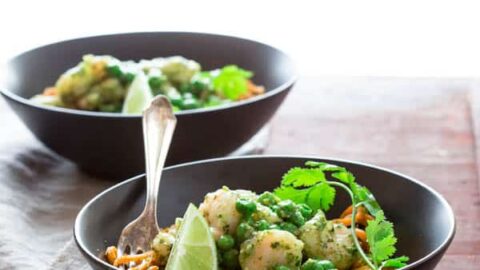




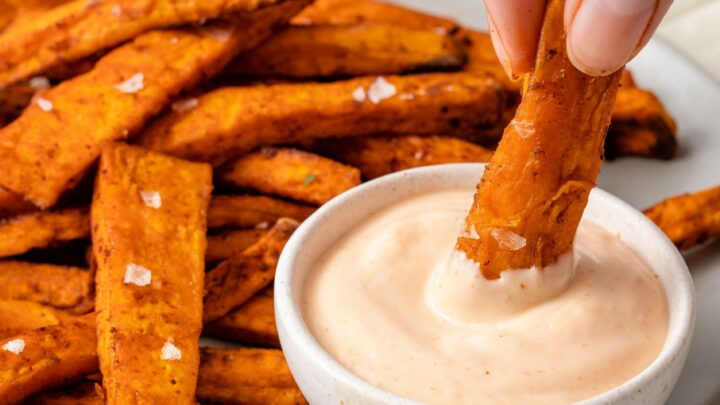

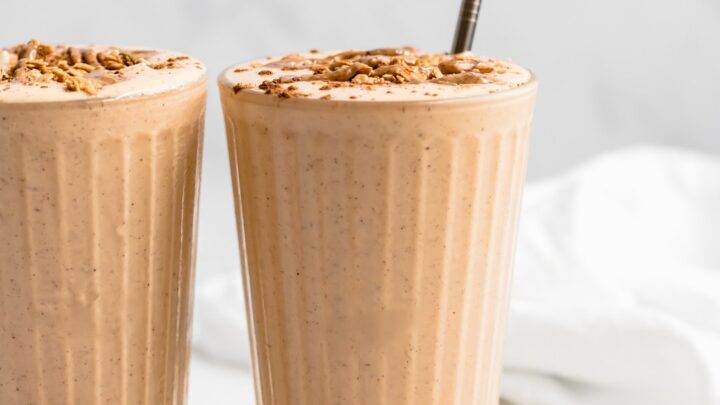







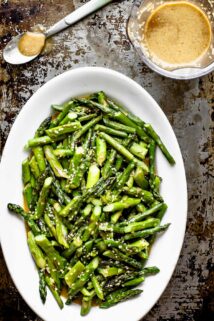
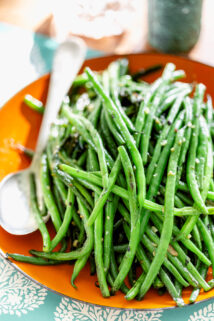


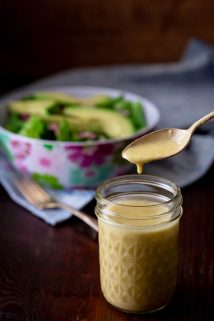


My favorite veggie! This answers so many questions I have about them so thank you!
I love them too. So glad you liked this one.
Sweet potatoes are simply amazing. Love them every which way!
They are so great!
You have so many great sweet potato recipes!!! I am very intrigued by the sweet potato peanut soup. 🙂
That is one of my all time favorites!
Wow, so helpful and interesting to learn about the 7 most popular varieties. I remember years ago I got a Garnet or Jewel accidentally, and it was the first sweet potato I didn’t like, so I tried to remember which kind it was LOL, but now I’ve forgotten, of course 😉 . It was mealy maybe. But all others have been just complete comfort food and easy, quick nutrition.
I have had mealy ones too. Sometimes the white ones can seem that way because they are more starchy.
I love sweet potatoes! Never realized there were so many types!
Same! I love learning as I research these produce spotlights!
I already love sweet potatoes, but you just made me love them more! So nutritious and it’s interesting to learn the history.
I am glad you found this useful!